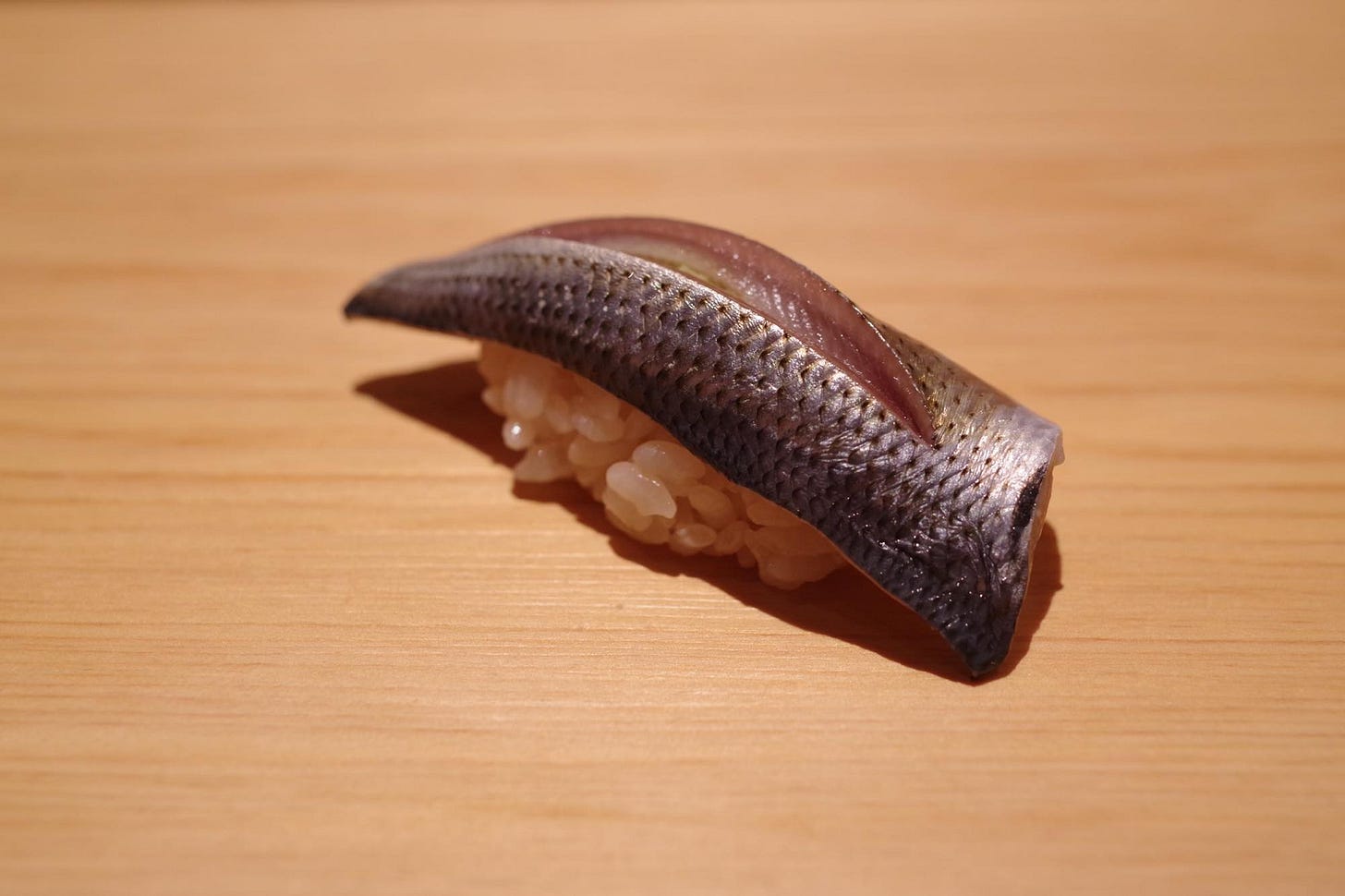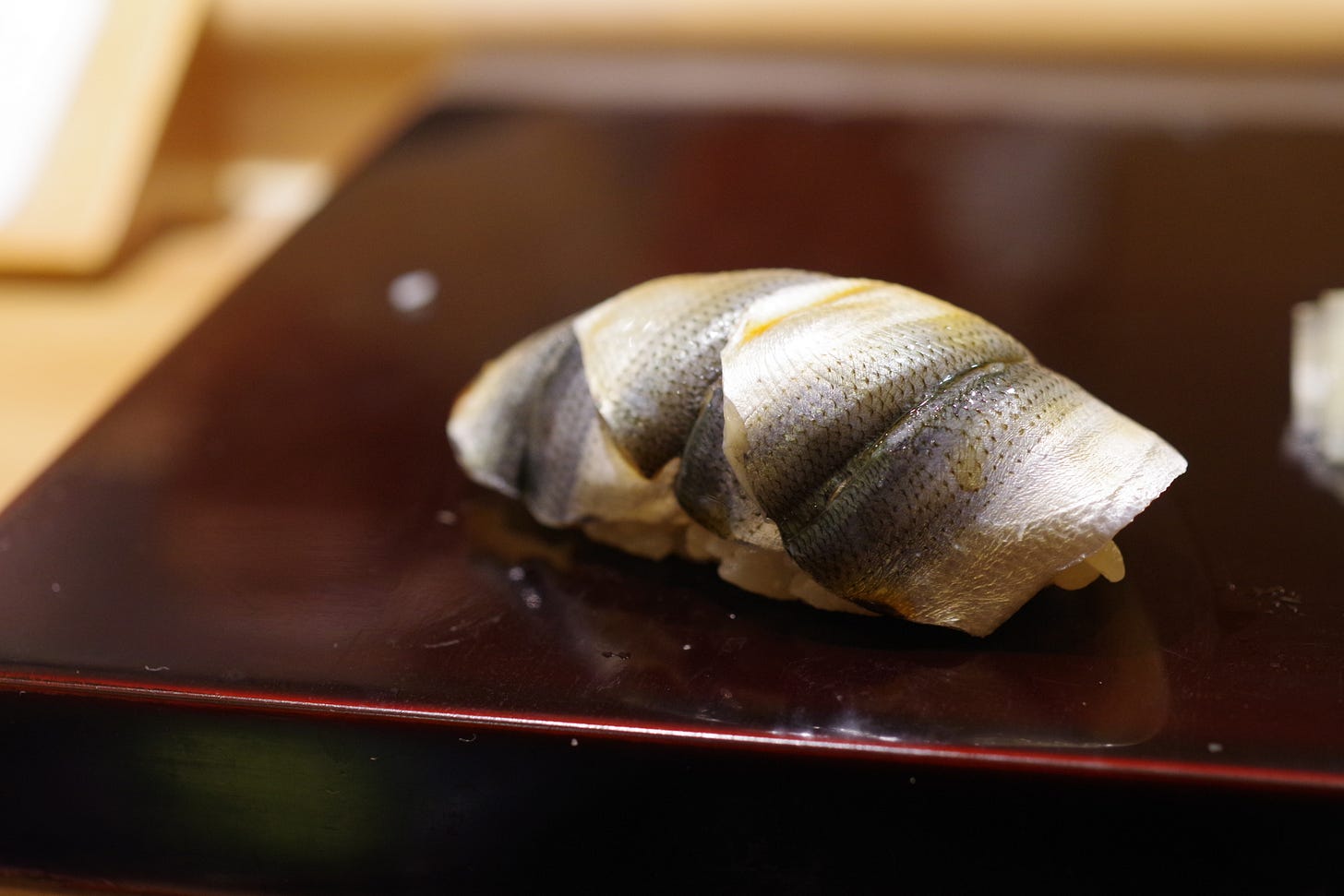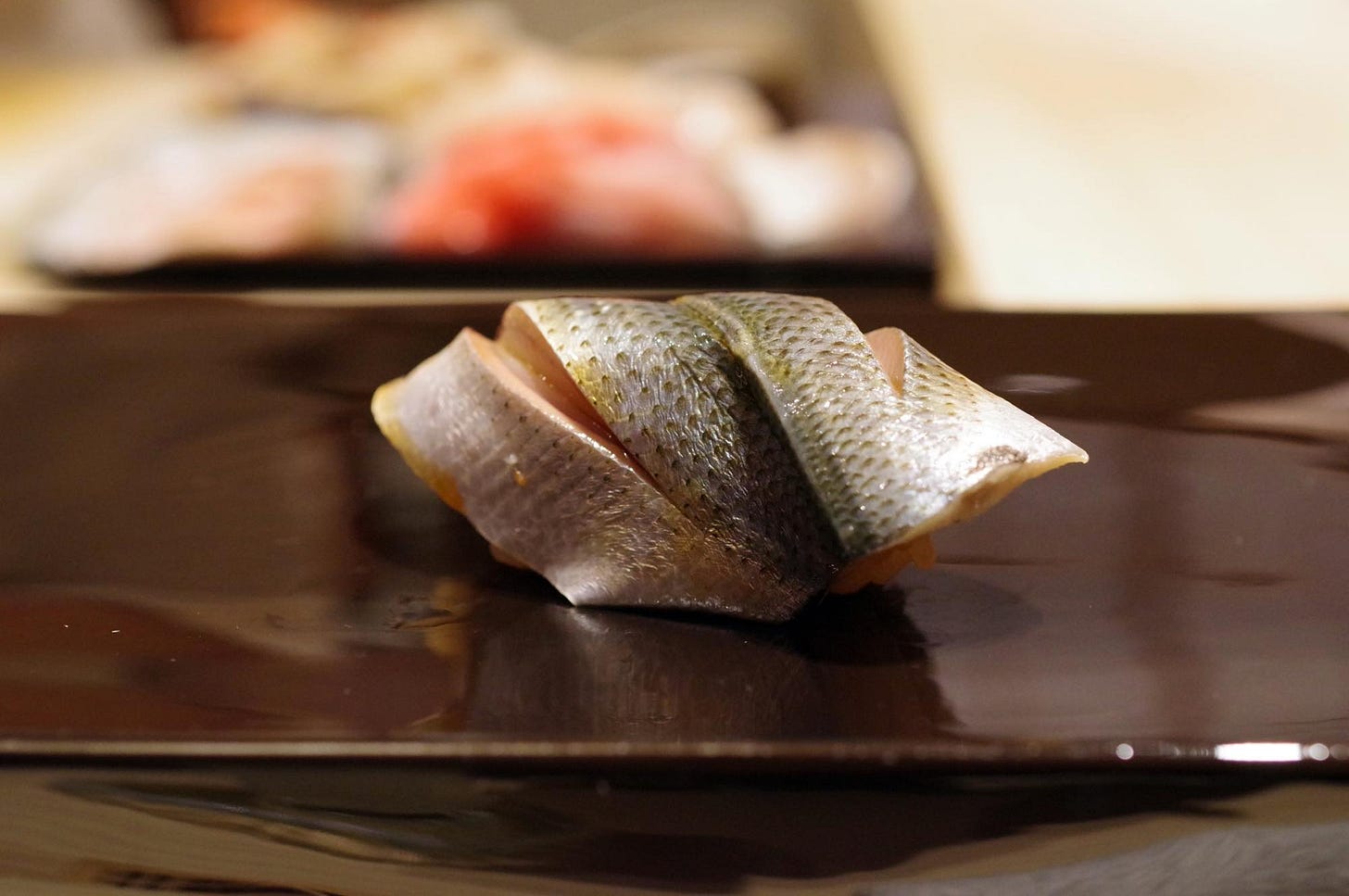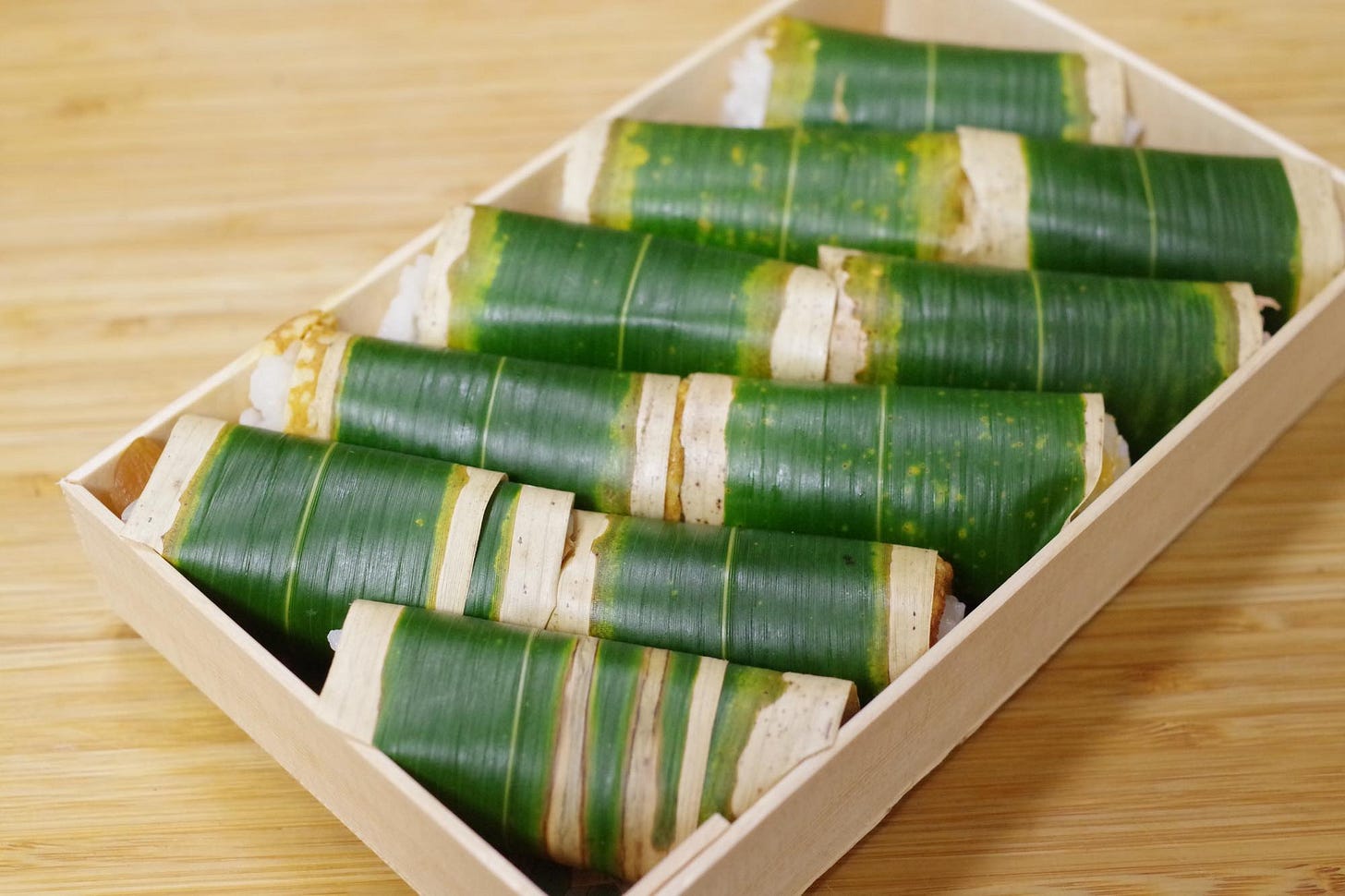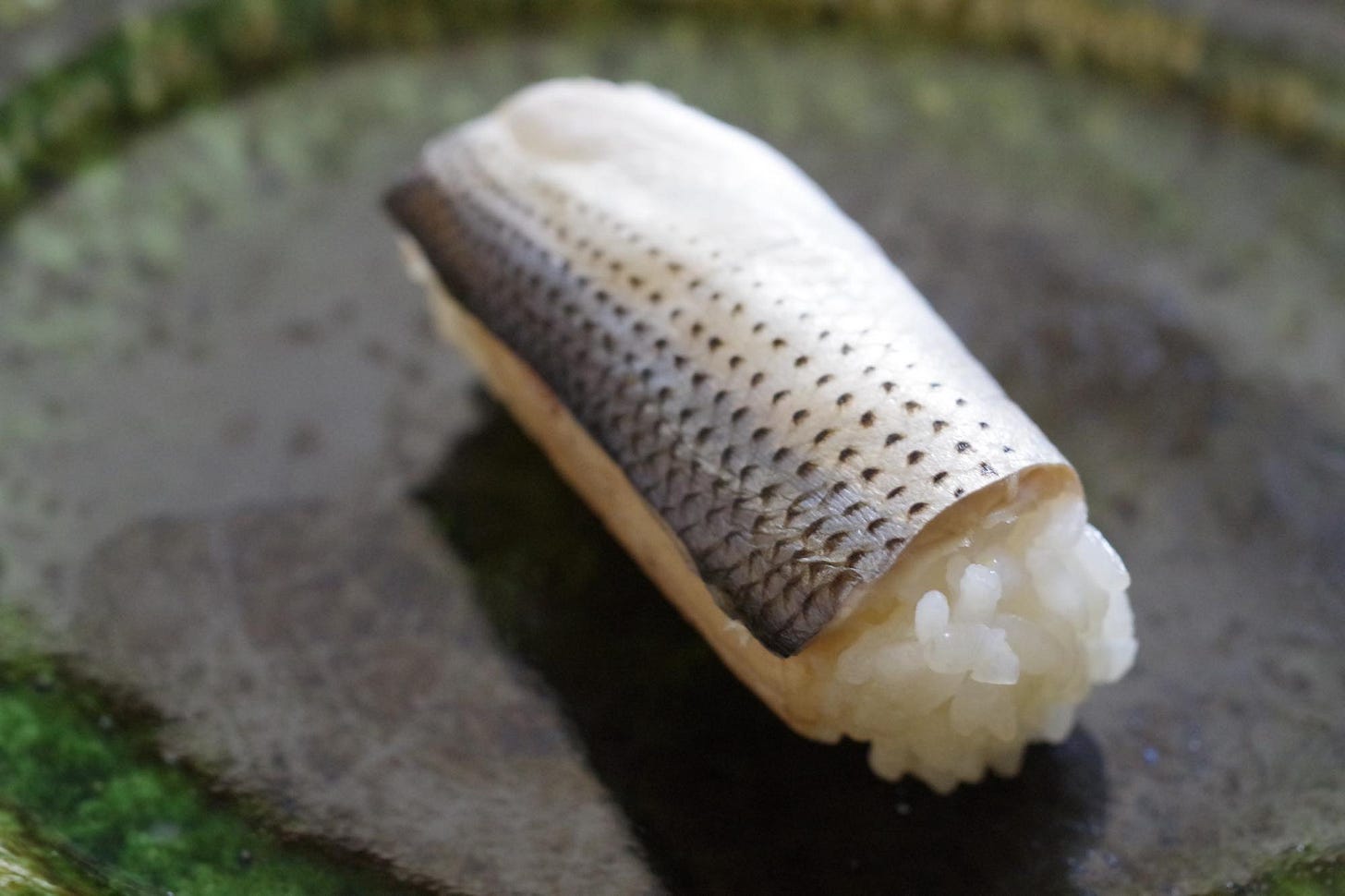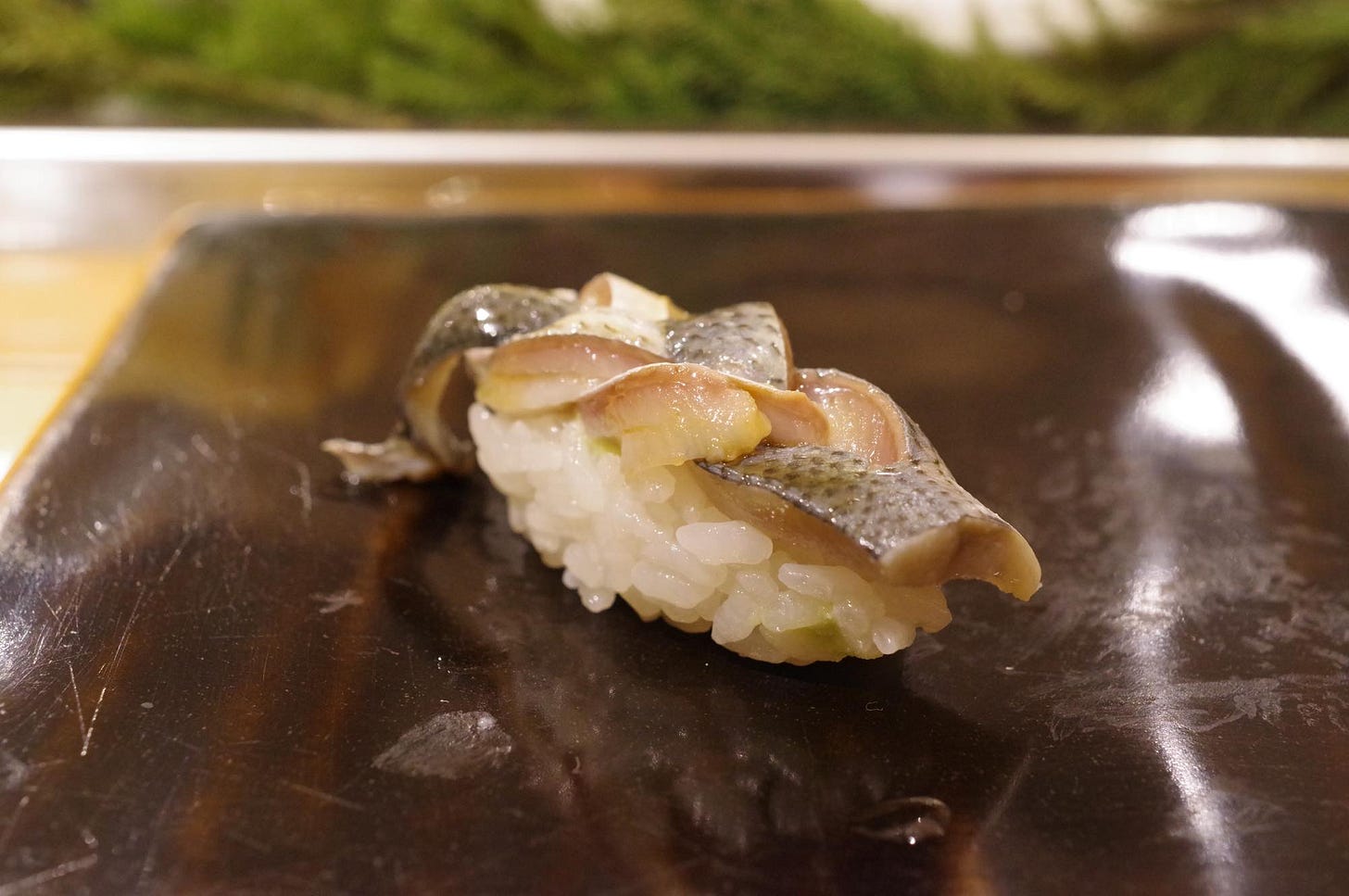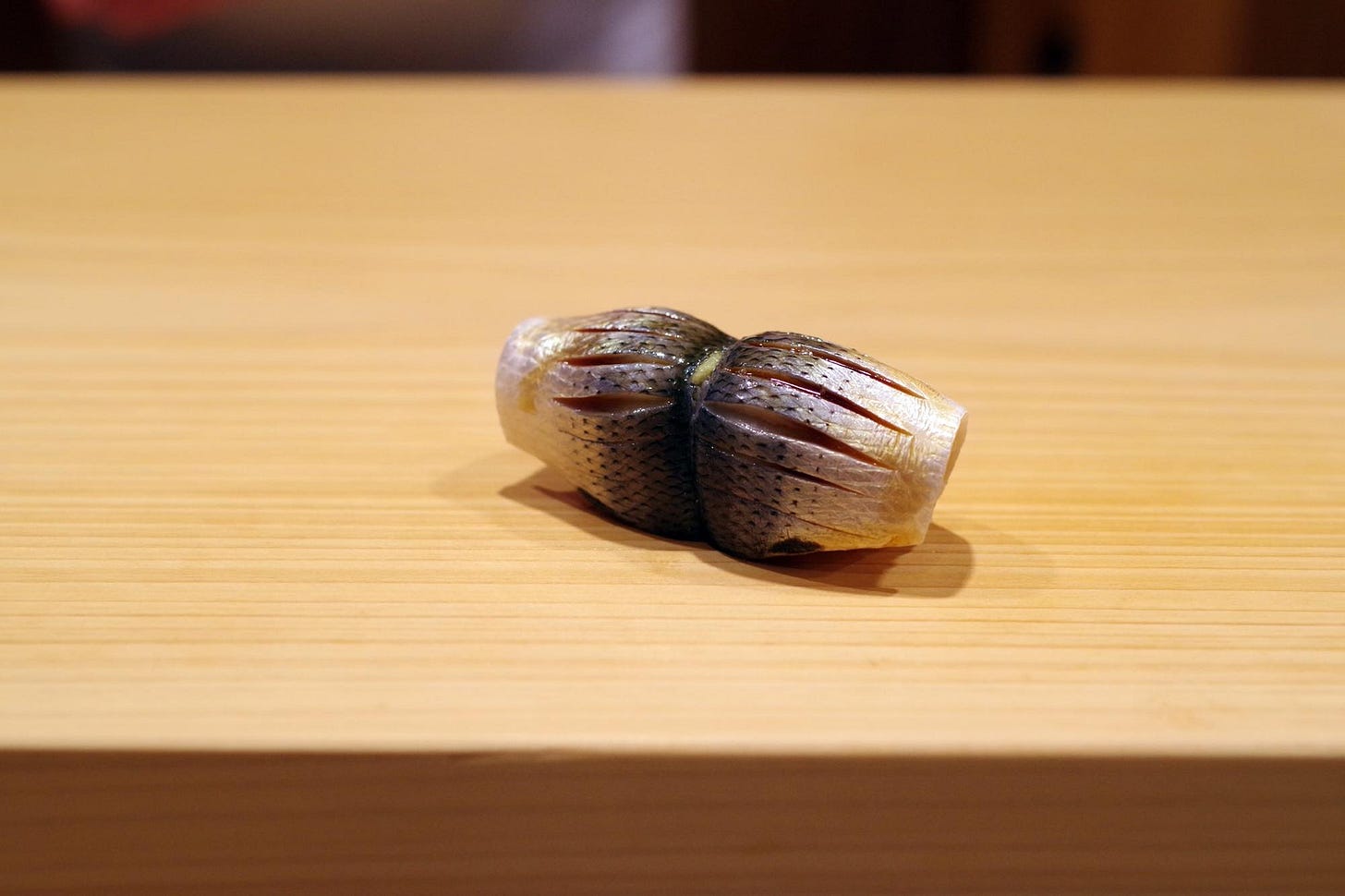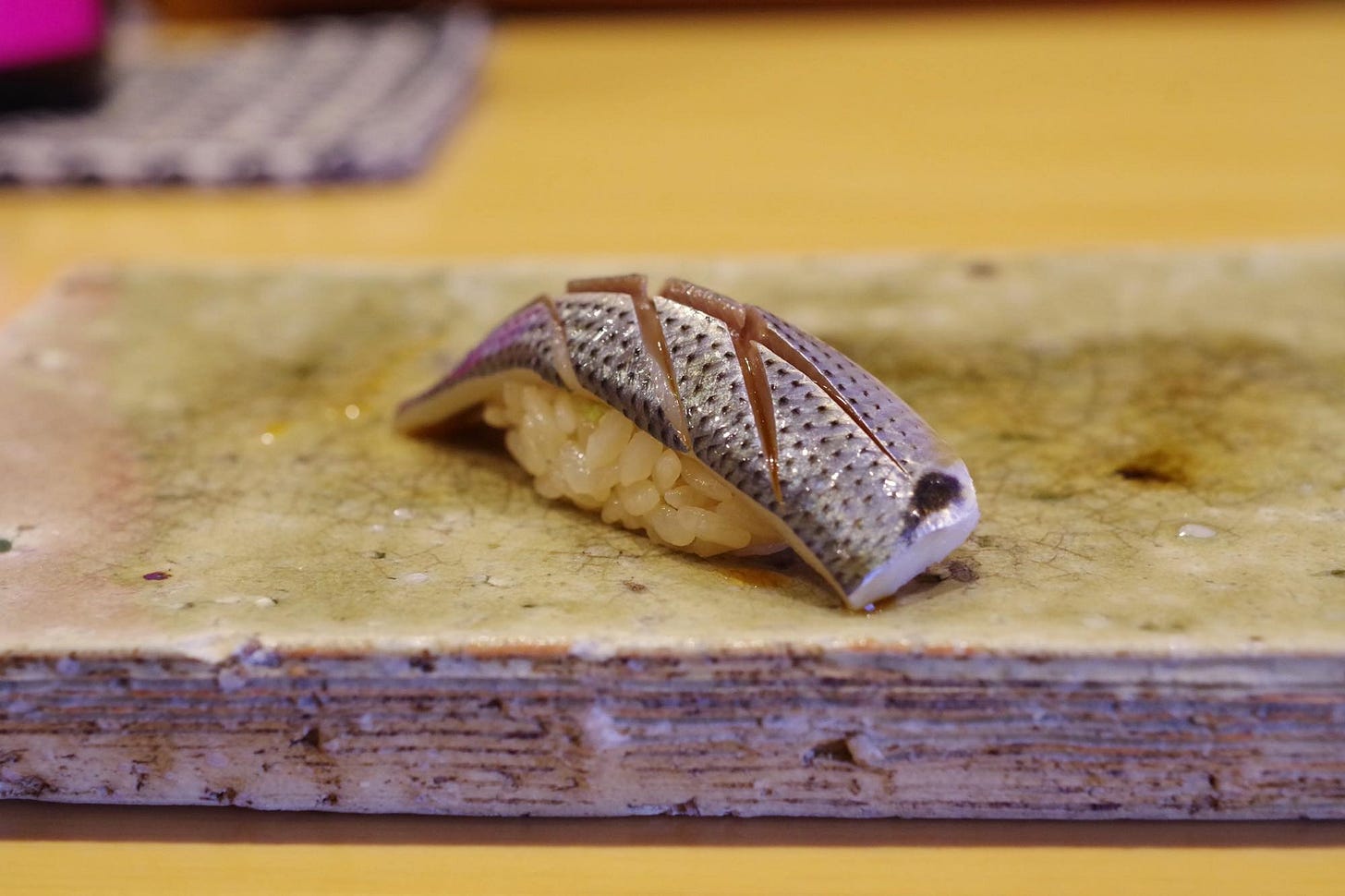In this 6th installment of "Traditional Sushi Ingredients," I will discuss Gizzard Shad (Kohada). Tuna is now considered the centerpiece of sushi, but in reality, it is kohada. This is a fact that is clearly stated by many famous chefs and sushi connoisseurs who have left their mark on history.
Gizzard Shad (Kohada)
Japanese Name: Kohada
English Name: Gizzard Shad
Sushi Topping Category: Silver skinned fish
Main Seasonal: Winter and Spring
The skill of the sushi chef can be seen in the balance of the kohada (gizzard shad) with the rice and the degree to which the kohada has been cured and allowed to rest. No matter how high-quality tuna or sea bream you buy, you cannot cheat on the kohada. The ultimate and most important part of the sushi preparation process is shime 〆, and the taste of kohada is surprisingly different depending on how it is 〆ed. It is a small and inexpensive fish, but its taste is more sophisticated than that of tuna, sea bream, and other high-end fish, which is the essence of Edomae-zushi. The silvery skin and the black spots give it a dignified presence, making it a chic-looking sushi species. Since kohada is a "successor fish,", Shusse-uo in Japanese, it changes its name as it grows. A full-grown fish is called konoshiro, and it changes its name to shinko, kohada, nakazumi, konoshiro, and so on.
Konoshiro is often used in local sushi, but considering its compatibility with nigirizushi, the kohada and nakazumi size are the best. The names and sizes of konoshiro are as follows:
Shinko: 4 cm - 5 cm
Kohada: 7 cm - 10 cm
Nakazumi: around 13 cm
Konoshiro: 15 cm or more
In the ancient style of sushi (sasamaki kenuki-zushi) and old-fashioned Edomae-zushi, kohada was very heavily salted, and vinegar was also thoroughly permeated, a method of curing that enhances preservation rather than flavor. Because the vinegar has permeated the sushi, the fish does not become moist even if it is laid out, and moisture is lost.
Recently, however, the method has been changed to one that prioritizes flavor since preservation is no longer a consideration. To put it simply, the ideal kohada in the modern age is one that is moist, fibrous, and fresh while being tightly cured, and at the same time, brings out the best flavor without any unpleasant smell. The points to be considered for the best taste are described below, but today, it is considered tactless to either over-finish or under-finish the fish.
What is also interesting about kohada is the variation in the cutting process. The knife is used to cut the fish according to its size and the flavor of the season.
Along with the curing work, kohada can showcase the skill and aesthetics of the sushi chef through the kiritsuke (cutting technique), which is one of the charms of preparing kohada.
There are three important sushi techniques when it comes to kohada:
Shime 〆 (using salt and vinegar)
Nekase (aging for less than about 7 days)
Hocho (cutting)
It is said, "Sushi is made to last on the kohada," but "kohada is made to last on the shime 〆." The 〆 work is everything. Since kohada has a high water content, dehydration with salt is essential. By removing the water, only the best parts of the kohada are left. After the kohada has sweated (i.e., the water has been removed), the pink flesh glistens in the light. Next, the fish is finished with vinegar. The purpose is to balance the acidity, remove any odor, and dissolve small bones in the process of curing. This process has a great impact on the texture and aroma of the fish. Since kohada is a small fish, its flavor can vary greatly depending on the technique used in the curing process.
The most important thing is to let the fish rest. Immediately after the fish is cured, the taste is not fully developed (the charm of kohada is not fully drawn out), so it is essential to let the fish rest for at least two days. (The author has studied several patterns of how much and how little to let the fish rest.) The aroma, not the smell, comes alive, the skin becomes softer, and the flavor is enhanced.
When savoring kohada at a sushi restaurant, pay attention to these key aspects:
Balance of saltiness and acidity
Balance with the flavor of the rice
Aroma
Umami (deliciousness)
Fattiness
Texture of the meat
Texture of the skin
Composition
Of all the sushi toppings, kohada has the most points of appreciation. The better the food, the more words will flood your mouth when you eat it. This is true regardless of the intensity of the flavor. A mediocre dish will leave you speechless, but a gem of a dish will flood you with words with each bite before you even swallow it. In the world of sushi, kohada is like this. When you eat kohada from a skilled sushi chef, you can taste the flavor in your throat after swallowing. It was Jiro Ono of Sukiyabashi Jiro who said, "When I eat ideal kohada, my throat rumbles." The human palate (the so-called "throat") has taste buds, which allow us to sense taste. The sweetness of fat in fish as well as meat can be directly sensed on the tongue, but truly flavorful foods are perceived as delicious in the throat.
The first and most important point when eating kohada is the balance between the saltiness and acidity of the kohada and the flavor of the rice. If the kohada itself is too salty or too acidic, it is not chic in this day and age, and if either the kohada or the rice is superior in terms of taste, it cannot be called a success.
And then there is the aroma. Aroma is different from smell. Smell includes "odor." Therefore, whether or not a food reporter uses the word "aroma" instead of "smell" in a food report reveals the eater's attitude and sensitivity toward food. Putting that aside, the three most common failures of kohada are "sour," "salty," and "smelly." If you fail to finish and let the fish rest, it will have a bad smell. Whether or not kohada has a good aroma is a rudimentary criterion for judging whether or not it is from a good sushi restaurant.
The season, area, and size of the sea also affect the flavor and fat content of kohada, but the best part of the sushi method is that even weak kohada can be made tastier by the curing process. In other words, a sushi restaurant that serves a certain level of kohada throughout the year is one that you should keep coming back to. It is a restaurant that can compete with its work, not its procurement.
In addition, not only the taste but also the texture of the kohada is important. This is because truly delicious kohada is one that melds with the rice as if the rice is melting with the kohada. When the rice grains are crushed, there should not be too much kohada left, and when the rice grains are crushed, the kohada should be cut in a rhythmic manner and become one with the rice grains in the process of alpha-formation.
Finally, the important thing is the composition, in other words, when to serve the kohada in the course. There is no right answer to this question, so it depends on the sushi chef's sense. As an eater, the important point to appreciate is whether or not the kohada leaves a strong impression at any point in the course and whether the taste continues to linger afterward. Sugita Oyakata of Sugita Sushi Restaurant in Nihonbashi-Kakigaracho, one of the best sushi restaurants in Japan, serves kohada as the first dish instead of his business card. It is very chic. However, if a sushi chef does a poor job with the kohada, it will never be chic, and the taste will remain and be covered with the next dish. In the lineage of Sukiyabashi Jiro, the kohada is usually served after the tuna (red meat, medium fatty tuna, and large fatty tuna). This is intended to "cut the fat of the otoro." There are many sushi chefs who use this method even if they are not from the "Sukiyabashi Jiro" school. However, if the phrase "cut the fat from the fat of the otoro" is taken literally, the kohada itself will not taste good. Certainly, the technique of cutting the fat of the otoro with a salty and acidic glaze is effective in creating a rhythm in the subsequent flow of the dish. However, when the kohada is cured with the objective of "cutting the fat," it invariably becomes a mysterious fish that is sour and salty. The key is whether or not the kohada gives the impression of surpassing the otoro while cutting the fat of the otoro. I must say that kohada that does not surpass otoro is not good at its job.
I have gotten a little too excited about kohada, but I hope you will forgive me, as it is, in a sense, the most important part of this project, "The Spirits of Sushi."
That's all for now. I look forward to seeing you again! If you want to remember sushi toppings and fish varieties discussed in this chapter, please refer to this linked article.
I hope you're looking forward to my next article!
If you enjoy this article, please share it on your social networks. Your support inspires me to keep writing!
The TOC of “Spirits of Sushi“
The History of Sushi
Exploring Sushi Varieties: Edomae-zushi (Nigiri-zushi), Kansai-zushi, and More
Essential Sushi Vocabulary: Key Terms for Navigating a Sushi Restaurant
The Heart of Sushi: A Guide to “Shari”, Sushi Rice
A Deep Dive into Sushi Fish and Accompaniments
The Art of the Sushi Master: Traditional Japanese Knives
Japan's Exquisite Fish Culture: From Tsukiji to Toyosu Market and Various Regions
Must-Visit Sushi Restaurants: From Tokyo to Sapporo, Fukuoka, and Other Regions
Regional Sushi Styles: Exploring Japan's Diverse Sushi Culture
Sushi and Sake Pairings: A Culinary Adventure
Sushi Etiquette and Table Manner: Dining like a Sophisticated Local
Shopping in Japan: Essentials for Crafting Delicious Sushi at Home
Sushi in Pop Culture: Manga and Movies
Sushi: A Lens on Health and Sustainability
Wrapping Up: The Future of Sushi





